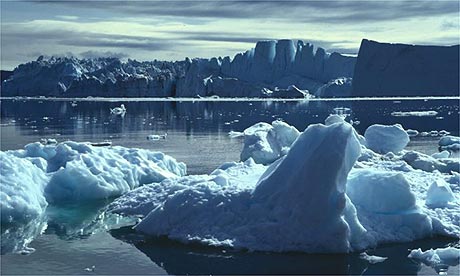If you're a shark freak like me, you have already seen the movie
Jaws. You have probably also heard that the best way to fend off a shark is to "punch it on the nose". But if you think like me, you also believe that by the time the shark is close enough to punch, you're probably already dead. That got me to thinking, "But what if there is a way to keep sharks away from you altogether?"

I knew that sharks can "zero in" on their prey by sensing electrical currents. I figured that meant that maybe, if you can mess with that process, you can drive them away instead of allowing them to get closer. I started my search with these things in mind.
Well, it turns out there is a way...but it isn't quite what I had in mind.
Eric Stroud and Robert Brill, a scientist at the Virginia Institute of Marine Science, has come up with a
disk that emits electric volts, repelling sharks. But, Brill says, "
This alloy is not meant to protect humans from sharks, this is meant to protect sharks from humans." More specifically, it is designed to be attached to fishing gear to repel sharks, leaving only game fish such as tuna and swordfish on the lines. (
Statistics show that 4.3 people die of unprovoked shark attacks on average each year, while humans kills an estimated 73 million sharks each year.)
The half-dollar-sized metal alloy reacts with saltwater to let off a 60 cm radius of 1.2 to 1.5 volts of electricity for up to 72 hours. So far, it has been shown to reduce shark by-catch by 64%.
The disk is very effective because the ampullae of Lorenzini on a shark's nose are extremely sensitive. "
The shark was expecting the electrical impulse from a heart beat," Stroud says, "
and we are giving it eight or nine times what it was expecting. It's like shining a flashlight into their eyes."
However, Bill also notes that the device does have drawbacks.
- It works best on solitary and slow-moving species such as the sand bar shark. It won't be much use against a high-speed, visual predator like a great white shark.
- Effectiveness also decreases as the number of sharks around that area goes up.
But just because it wasn't designed for personal use doesn't stop a few people.
"
We don't advocate personal use," said Stroud, "
but people do buy them online and modify them for personal use."
Well, that's what I would use it for.
For the original article,
click here.














 Studies done at the University of Minnisota's Institute of Technology discovered that the hydrodynamic environment of fish can shape the evolution of their physical form and their swimming style. Two sets of robotic fish were made. The first set was shaped like a mackerel but one swam like a mackerel and the other swam like an eel. The other set was built like an eel but one beat its tail like a mackerel and the other the other swam like an eel. They then placed the fish at standing starts and raced them and recorded the results.
Studies done at the University of Minnisota's Institute of Technology discovered that the hydrodynamic environment of fish can shape the evolution of their physical form and their swimming style. Two sets of robotic fish were made. The first set was shaped like a mackerel but one swam like a mackerel and the other swam like an eel. The other set was built like an eel but one beat its tail like a mackerel and the other the other swam like an eel. They then placed the fish at standing starts and raced them and recorded the results. 





